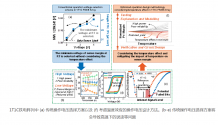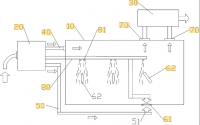You are using an out of date browser. It may not display this or other websites correctly.
You should upgrade or use an alternative browser.
You should upgrade or use an alternative browser.
Chinese semiconductor industry
- Thread starter Hendrik_2000
- Start date
- Status
- Not open for further replies.
Microelectronics Institute made progress in research on the reliability of ferroelectric memory
HfO2-based ferroelectric memory ( FeRAM ) has attracted much attention due to its high speed, good scalability and CMOS process compatibility. However, the characteristics of FeRAM are extremely sensitive to temperature, and its performance is greatly affected by temperature. How to alleviate the impact of temperature on the performance of FRAM arrays so that they can operate with high reliability at high temperatures needs further research. In response to this problem, the team of academician Liu Ming of the Institute of Microelectronics proposed a ferroelectric array operation method that considers temperature effects, and verified it on a 128kb 1T1C FeRAM array, proving that the ferroelectric array can achieve high temperature under this method. under high-reliability operation. The study found that in the operation of ferroelectric arrays, traditional array manipulation methods can cause misreading at high temperatures. The researchers systematically studied the mechanism of the reduction of remanent polarization at high temperature by means of material characterization and electrical measurement. It is found that the increase of the built-in electric field caused by electron decapture is the main reason for the decrease of the remanent polarization value. According to this mechanism, the researchers established a dynamic Monte Carlo model considering the temperature effect, and gave the operating voltage to alleviate the temperature effect through simulation.
The research achievement was selected into the 2023 VLSI with the title "First Demonstration of a Design Methodology for Highly Reliable Operation at High Temperature on 128kb 1T1C FeRAM Chip" . Associate researcher Gong Tiancheng of the Institute of Microelectronics is the first author, and associate researcher Yang Jianguo, researcher Wang Lingfei and researcher Luo Qing of the Institute of Microelectronics are the corresponding authors.

The research achievement was selected into the 2023 VLSI with the title "First Demonstration of a Design Methodology for Highly Reliable Operation at High Temperature on 128kb 1T1C FeRAM Chip" . Associate researcher Gong Tiancheng of the Institute of Microelectronics is the first author, and associate researcher Yang Jianguo, researcher Wang Lingfei and researcher Luo Qing of the Institute of Microelectronics are the corresponding authors.

We've been reasonably sure that SMIC has been producing Huawei's Ascend chips for a while now, given that the Ascend 910 has listed a significant upgrade to its performance fairly recently. What is intriguing is the "and below" part. Whether that phrase is added for dramatic effect and whether the rumours are true is something we will have to wait and see.This site is locked tight, but maybe someone here knows more about it
A very steep drop in both semiconductor and semiconductor equipment exports from the US to China.
Coupled with a looming recession, Yeah the US needs a lot of help....lolA very steep drop in both semiconductor and semiconductor equipment exports from the US to China.
Last edited:
Really interesting, probably related to this patent. Didn't talk about the power and stability of that system, that remain to be seen.
Laser gas purification system and solid-state laser

this is the patent for the 213nm DUV laser

Last edited:
I took a look and have some questions about his light source article
1. The published paper used 50W 1064nm in and got 1.17W 213nm out, hswz assumed similar efficiency can be scaled to tens of kilowatts.
1064纳米激光进晶体,213纳米激光出来,效率2.34%。目前国内外公开报道的1064纳米激光的平均功率万瓦级,论文是50瓦进,1.17瓦出,万瓦可出234瓦的深紫外光,目前5纳米制程的GT66A深紫外光源最大功率也才90瓦
2. Hswz claims we can use raman laser to get higher frequency light say 157nm based on previous patent. Has the previous patent been tested at say 100W+? Second, is it possible/do we have the right materials for getting 213nm -> 193nm with raman laser?
如果觉得213纳米还是长,用拉曼频移激光器我觉得应该可以解决,上海光机所20年前的专利,213纳米充氢气拉曼频移成157纳米(与浸没式光刻竞争失败的光刻波段)的激光,寿命上万小时,成本仅十分之一。213纳米拉曼频移成193纳米光刻波段我觉得也应该不成问题,连光刻胶都不用变
Last edited:
157nm was given up due to many technical factors that were not able to overcome (for 1, very difficult to do immersion).I took a look and have some questions about his light source article
1. The published paper used 50W 1064nm in and got 1.17W 213nm out, hswz assumed similar efficiency can be scaled to tens of kilowatts.
2. Hswz claims we can use raman laser to get higher frequency light say 157nm based on previous patent. Has the previous patent been tested at say 100W+? Second, is it possible/do we have the right materials for getting 213nm -> 193nm with raman laser?
- Status
- Not open for further replies.
